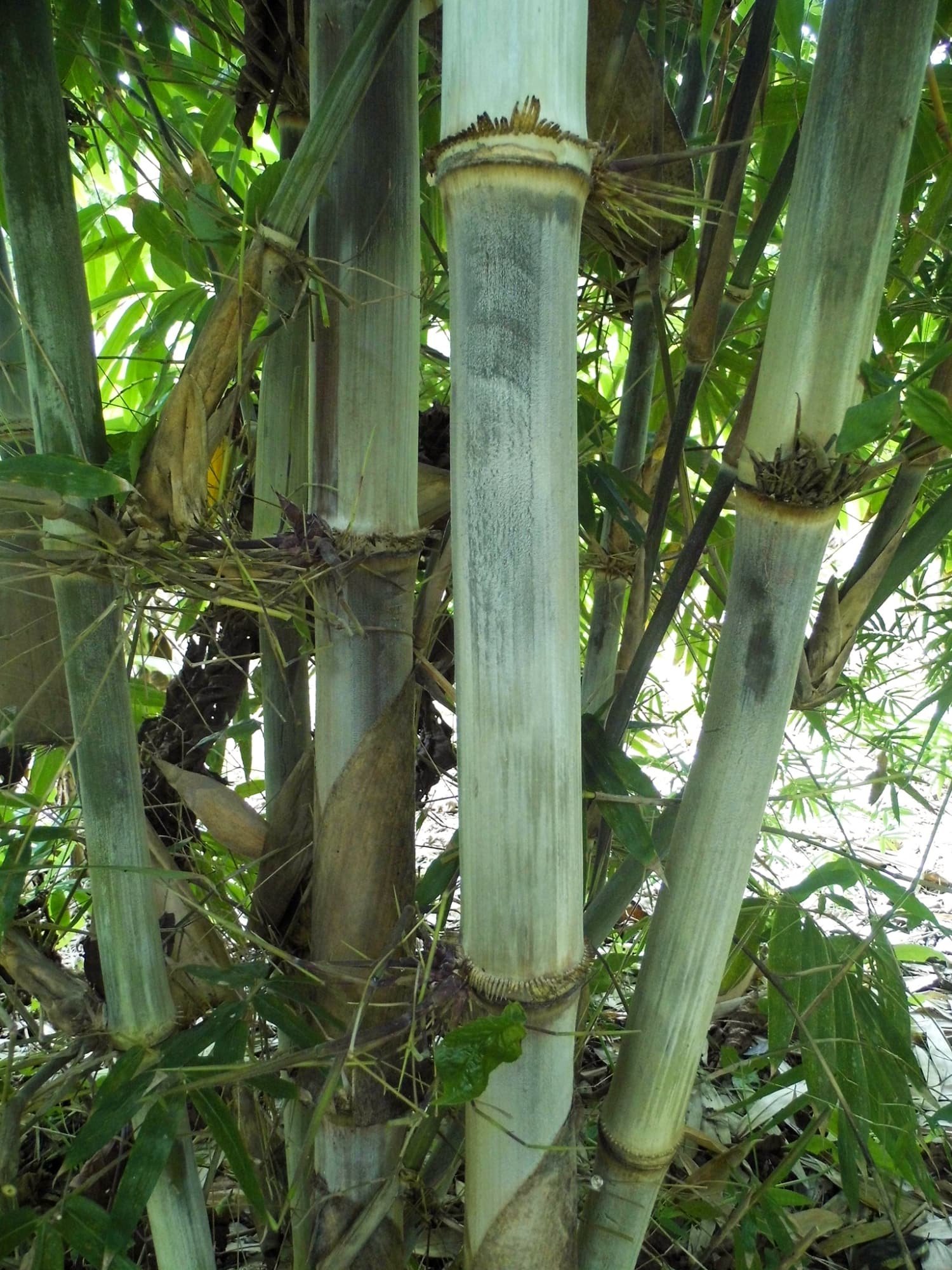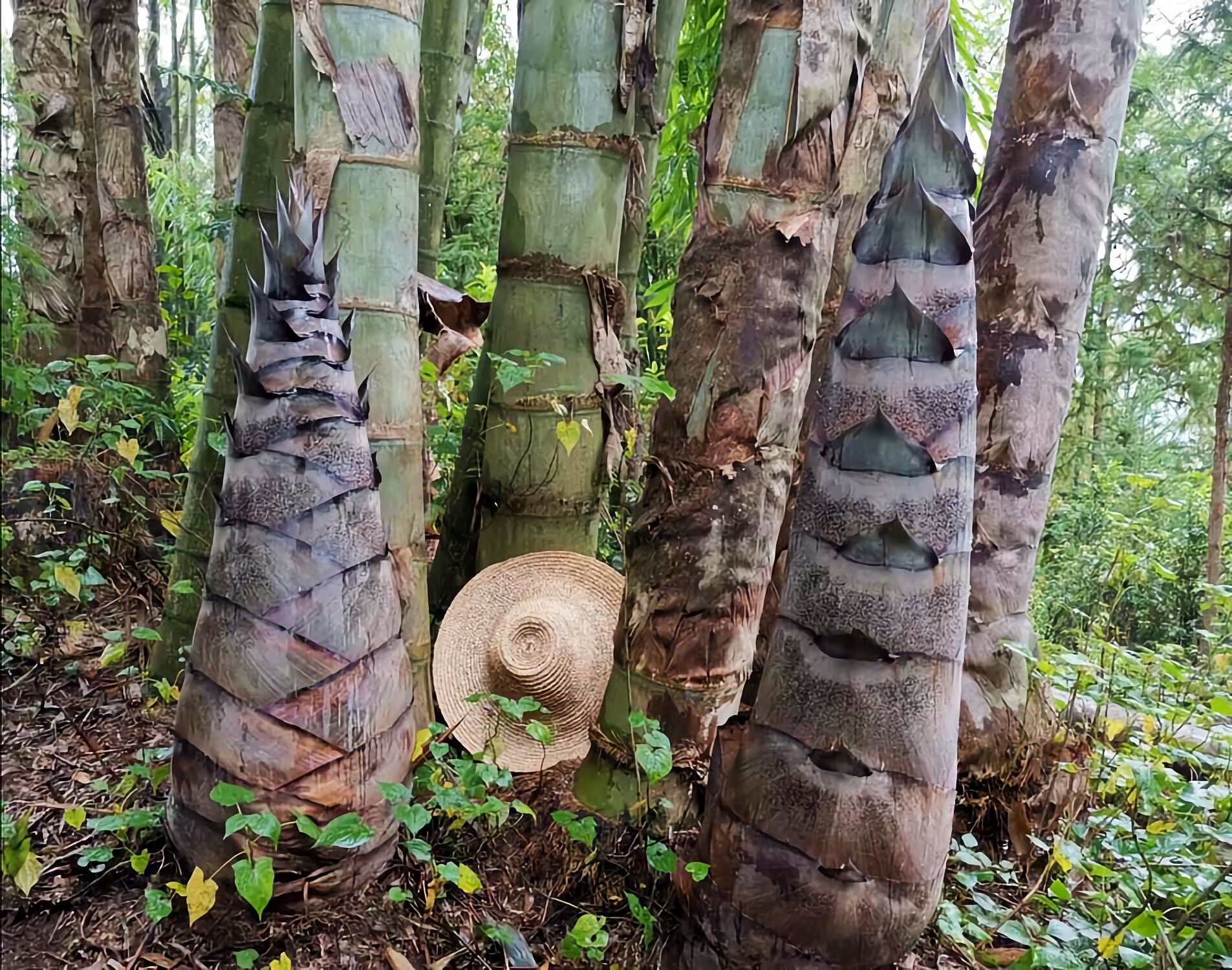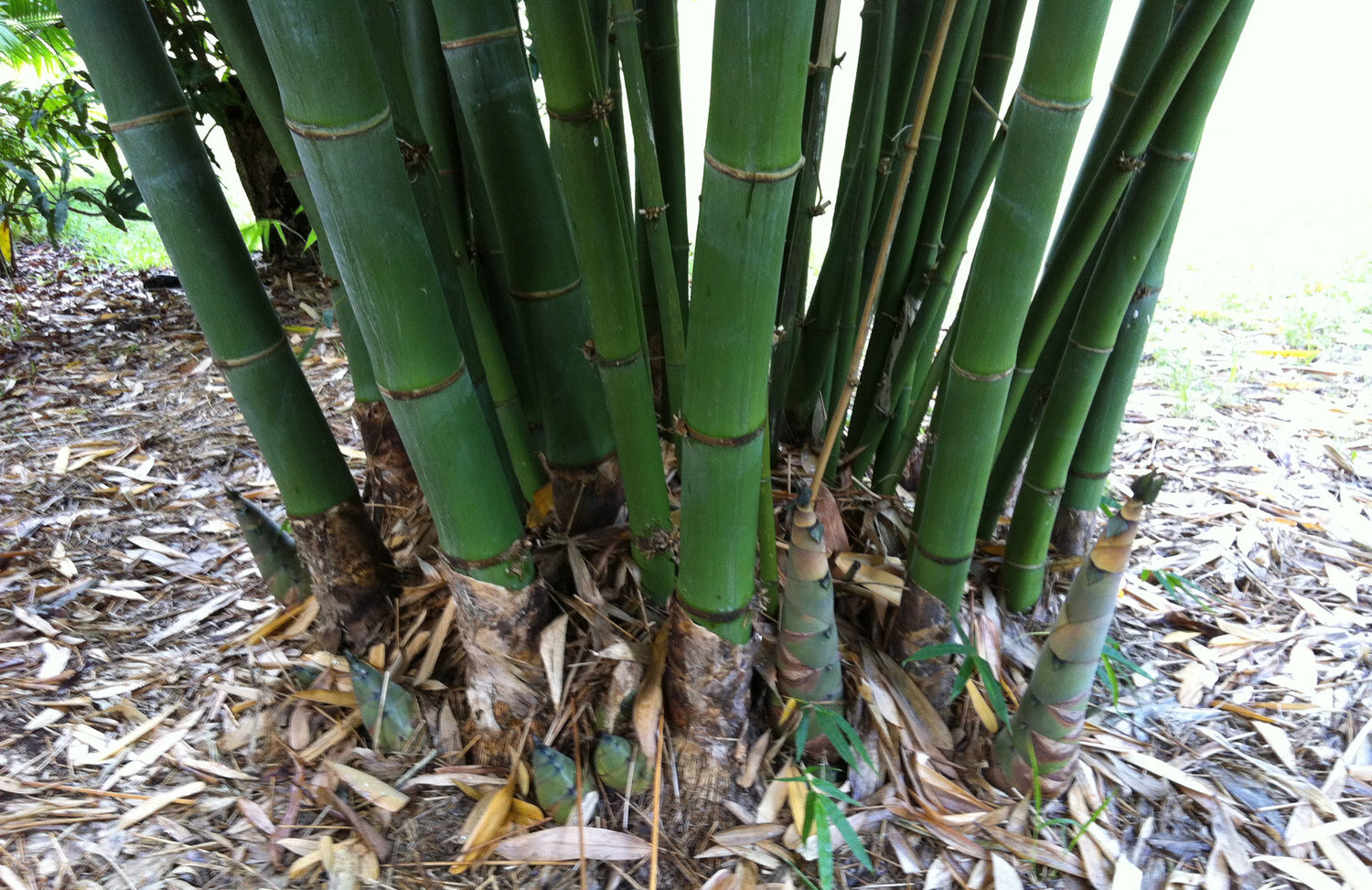Dendrocalamus strictus
Dendrocalamus strictus also known as Male Bamboo, Solid Bamboo or Calcutta Bamboo is a tropical and subtropical clumping species native to Southeast Asia. This bamboo is extensively used as a raw material in paper mills and has edible shoots.
Summary
| Height | 8 - 20 m |
| Diameter | 2.5 - 8 cm |
| Growth Habit | Clumping |
| Climate | Tropical - Subtropical |
| Hardiness | -5 °C |
| Origin | Southeast Asia |
Photos
Culms
Dendrocalamus strictus is a medium-sized bamboo with culms of about 8-20 m tall and 2.5-8 cm in diameter. The internodes are 30-45 cm long and thick-walled. Culms are hollow when growing under humid conditions, but nearly solid under dry conditions. This species has pale blue - green culms when young, and dull green or yellow culms on maturity, which can slightly zig-zag from the middle towards the top. Its nodes are somewhat swollen and basal nodes are often rooting.
Branches
Many clustered branches with 1 larger dominant branch. The lower nodes often have branches.
Leaves
Leaf size is variable as they are smaller in dry locations and bigger in moist areas, sizes vary between 5-25 cm long and 1-3 cm broad.
Flowering
Gregarious flowering cycle varies from 25-45 years. This does not mean that all the clumps of a tract flower at the same time. It commences with intensive sporadic flowering for 2-3 years, increasing progressively resulting in the flowering of all the clumps in a period of five years. Sporadic flowering is seen almost every year. Flowers appear from November to February and fruits are seen from February to April.
Habitat
This species is mainly found in semi dry and dry deciduous forests, or as understory in mixed forests and teak plantations. It grows on hill slopes, ravines and alluvial plains from sea level up to 1,200 m. Dendrocalamus strictus prefers a low relative humidity and mean annual temperatures between 20°C - 30°C, but can withstand extreme temperatures (as low as -5°C and as high as +45°C). The optimum annual rainfall is 1,000 - 3,000 mm, with 300 mm per month during the growing season, but is very drought resistant and grows rather well with only 750 - 1,000 mm rainfall per year. The species does not grow well on water-logged or heavy soils such as pure clay or a mixture of clay and lime. It rather prefers sandy loam soils with good drainage and a pH between 5.5 - 7.5.
Uses
Dendrocalamus strictus is extensively used as raw material in paper mills and also for a variety of purposes such as light construction, furniture, musical instruments, bamboo board, mats, sticks, agricultural implements, rafts, baskets, woven wares and household utensils. Young shoots are edible and used as food. Leaves are used as forage, and decoction of leaves and nodes and silicious matter is used in traditional medicine.
Origin
Native to India where it occupies 53% of the total bamboo area (especially between the Ganges and Ramganga rivers). It is also native to Nepal, Bangladesh, Myanmar and Thailand. Many other countries in Southeast Asia such as China, Sri Lanka, Malaysia, Indonesia, Philippines and Vietnam have introduced and cultivate the species.










